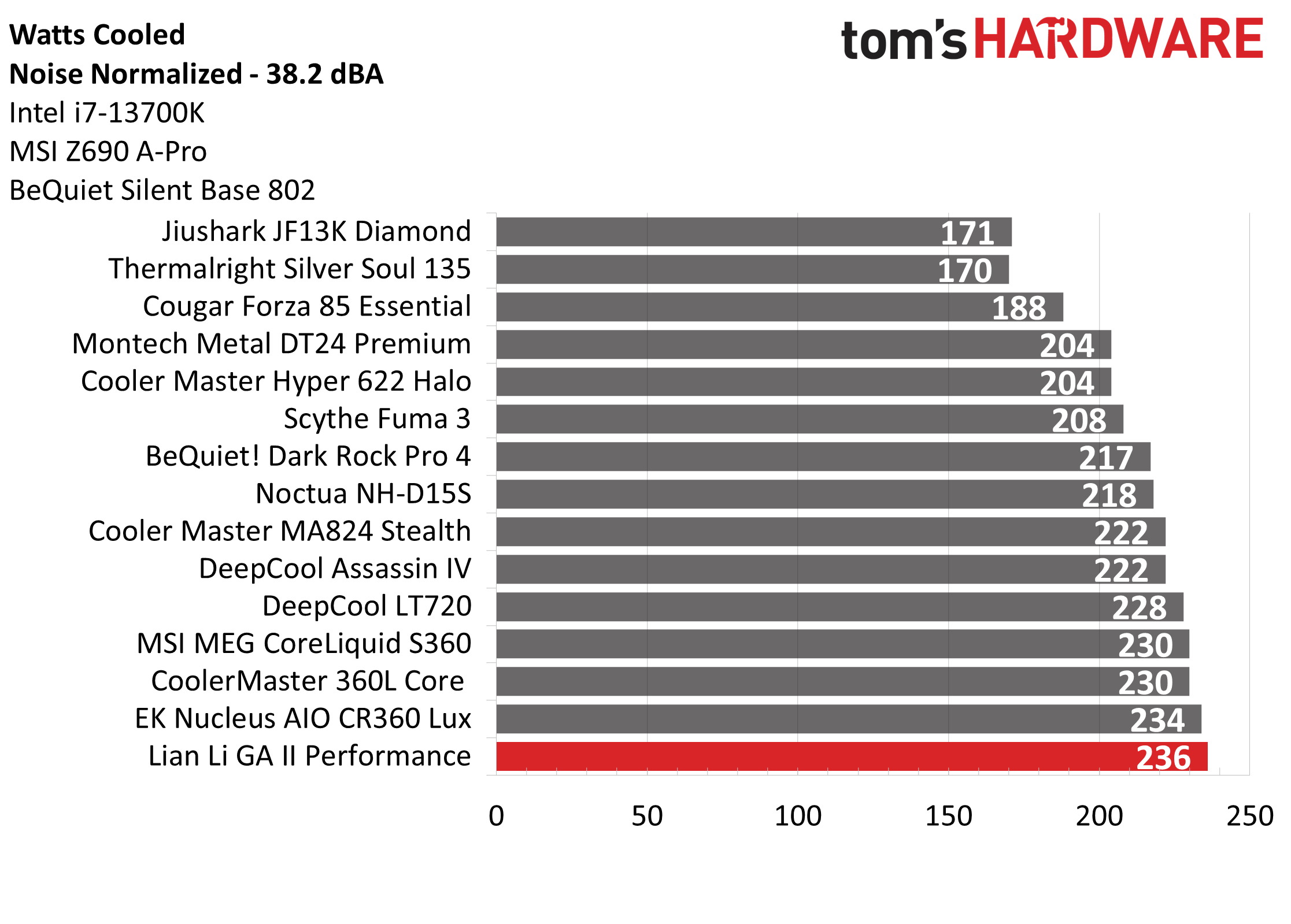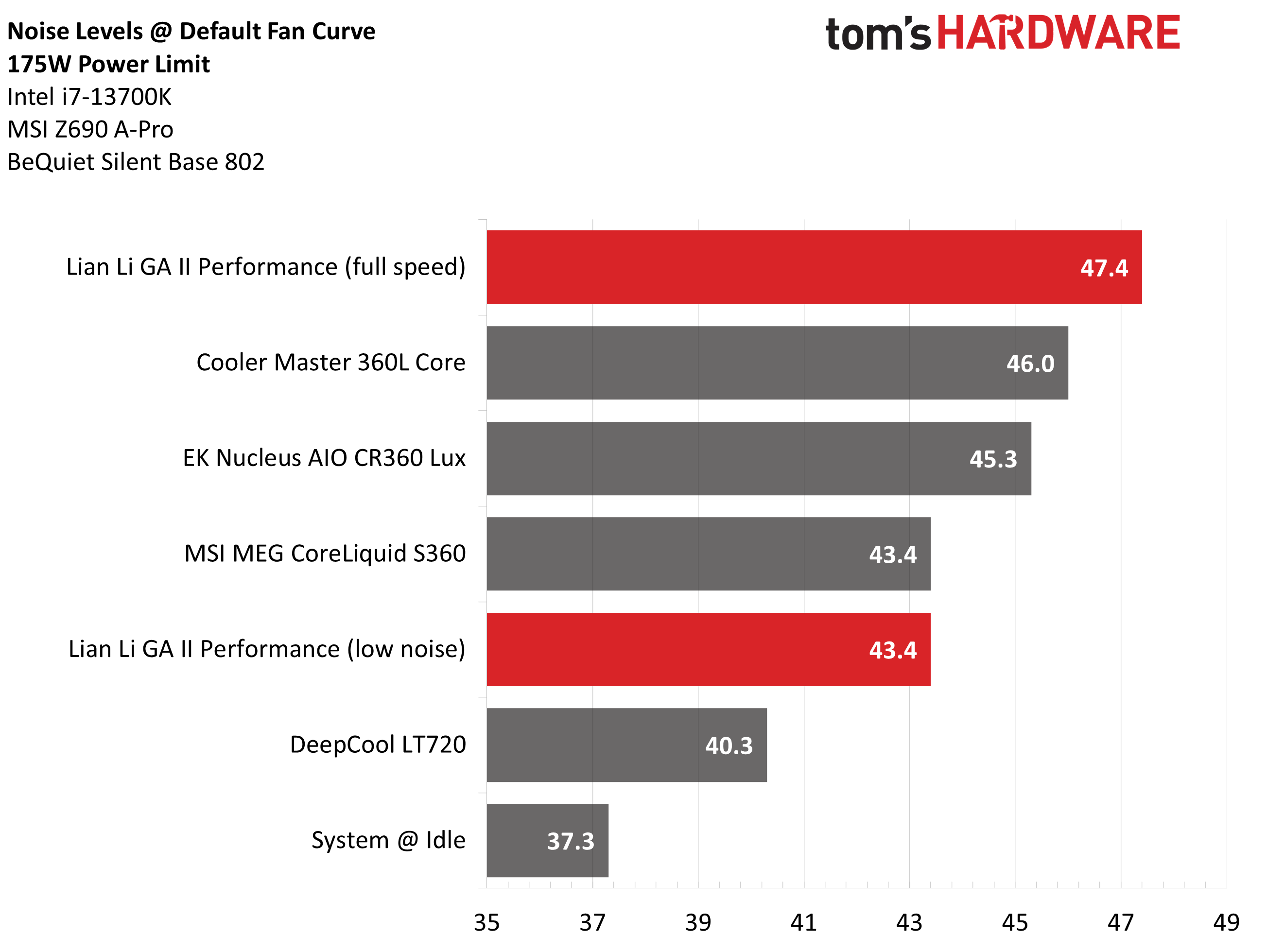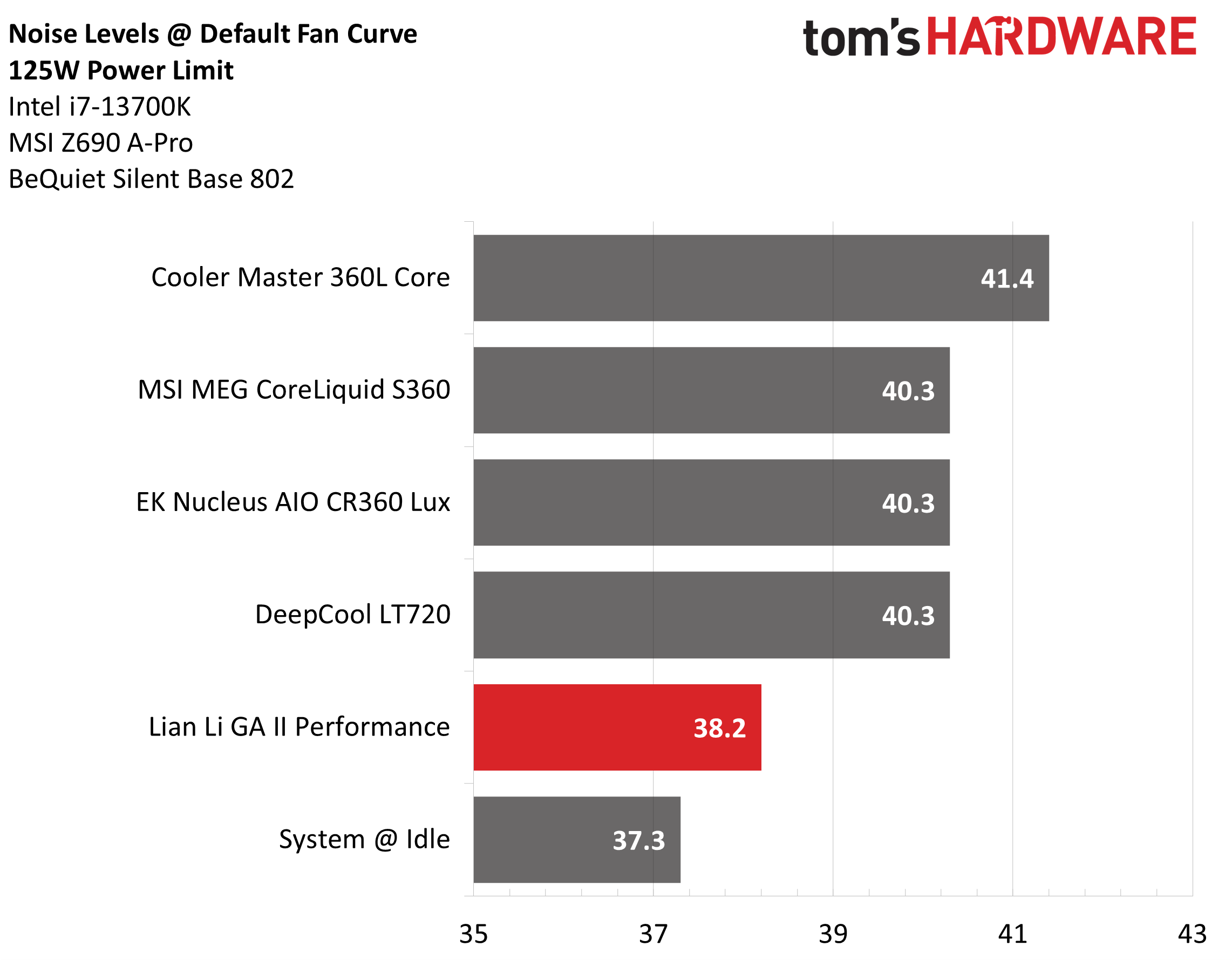Why you can trust Tom's Hardware
Thermal Results with noise normalized to 38.2 dBA
Finding the right balance between fan noise levels and cooling performance is important. While running fans at full speed can improve cooling capacity to some extent, the benefits are limited and many users prefer a quiet system.
When tuned for quiet operation, Lian Li’s Galahad II Trinity Performance edges past the previous record held by EKWB for the best performance we’ve recorded from a liquid cooler, cooling an average of 236W during Cinebench testing when paired with Intel’s i7-13700K.
No Power Limits Thermal Results
Without power limits enforced on Intel’s i7-13700K, the CPU will hit its peak temperature and thermally throttle with even the strongest of air coolers. As such, we would normally measure the total watts cooled in this scenario. However, all three of the liquid coolers we’ve tested for this review are capable of keeping Intel’s i7-13700K under its peak temperature – so we’ll compare the actual temperature of the CPU instead.
I had expected the Galahad II’s performance to be, at best, a 1-2C improvement over it’s competitors. When I first measured these results, I literally couldn’t believe my eyes; a 9% improvement in cooling dissipation is practically unheard of in this market.
I genuinely thought that something must be wrong with my thermostat, and so I replaced it to ensure that ambient temperature levels were accurate. But after testing, retesting, and even replacing the thermostat – the performance measurements did not change.
This performance is absolutely amazing, but thermals are only one part of the picture. How loudly the cooler runs is very important as well. In it’s default configuration, Lian Li’s GA II Trinity Performance runs loudly at 55.2 dBA. I’ve only tested a handful of coolers that reach this level of noise.
Normally I would consider this a mark against the product, however Lian Li wisely included a built-in low noise/high performance toggle switch, allowing you to reduce maximum fan speeds and noise levels with the flip of a switch. Most coolers which support low noise modes have reduced thermal performance when engaged, but I didn’t observe any difference in thermals between the two modes when tested on my i7-13700K. When set to the low noise mode, total noise output is reduced to 49.2 dBA, which is on par with MSI’s and DeepCool’s competing 360mm AIOs.
Get Tom's Hardware's best news and in-depth reviews, straight to your inbox.
While I haven’t yet tested this, these unusually strong results make me suspect that Lian Li’s Galahad II Trinity Performance might be the first AIO capable of cooling Intel’s i9-13900K in intensive workloads without reaching TJMax (maximum CPU temperature).
175W Cinebench Results
Lian Li’s 175w performance continues the trend of chart-topping performance, matching the performance of EKWB’s CR360 Lux, with an average CPU temperature of 71C (48 degrees celsius over a 23C ambient temperature), beating DeepCool’s LT720 by 3 degrees C and Cooler Master’s 360L Core by 2 degrees C.
How are noise levels? In the low noise mode, which again does not impact thermal performance when paired with Intel’s i7-13700K, I measured 43.4 dBA. This is better than EKWB & Cooler Master’s offerings, which run above 45dBA – but worse than DeepCool’s LT720, which runs at a quiet hum of 40.3 DBA. The full performance mode runs louder than all of the coolers tested here, but since the low noise mode offers the same thermal performance, we’re not considering this a drawback.
125W Cinebench Results
The lowest power limit I test with Raptor Lake CPUs is 125 watts. This is a high enough limit to allow the CPU to maintain its base clock speeds, even in the most intensive tests. And most coolers should be able of keeping the CPU below Tjmax – even low-end coolers. For the most part, these thermal results are academic – noise levels are much more important here.
The trend of chart-topping performance continues with our 125W power results, reaching an average of 57C (34c over an ambient temperature of 23c) during the course of testing. Not only did the Galahad II achieve thermal domination, but it did so while running quietly.
In the previous workloads, there was a significant acoustic difference between the low noise and full performance modes of the Lian Li Galahad II Trinity Performance – but in this TDP limited scenario both modes ran quieter than any of the competing coolers featured here. I measured a low noise profile of 38.9 dBA in this test.
Conclusion
Lian Li’s Galahad II Trinity Performance raises the bar for AIO Cooling. Every component of the Galahad has been upgraded, resulting in unprecedented cooling domination. The cooler installation is simple and easy, and it’s reasonably priced at only $169 USD. With results like this, I find it hard to recommend any other liquid cooler, making this the first CPU cooler I have ever awarded a 5-star rating. This is the best liquid cooler on the market, without question.
That being said, Lian Li has another version of this cooler coming soon that features an LCD screen and the newest Asetek pump technology. While I can’t say for sure until I test it, it might just outperform this cooler.

Albert Thomas is a contributor for Tom’s Hardware, primarily covering CPU cooling reviews.







